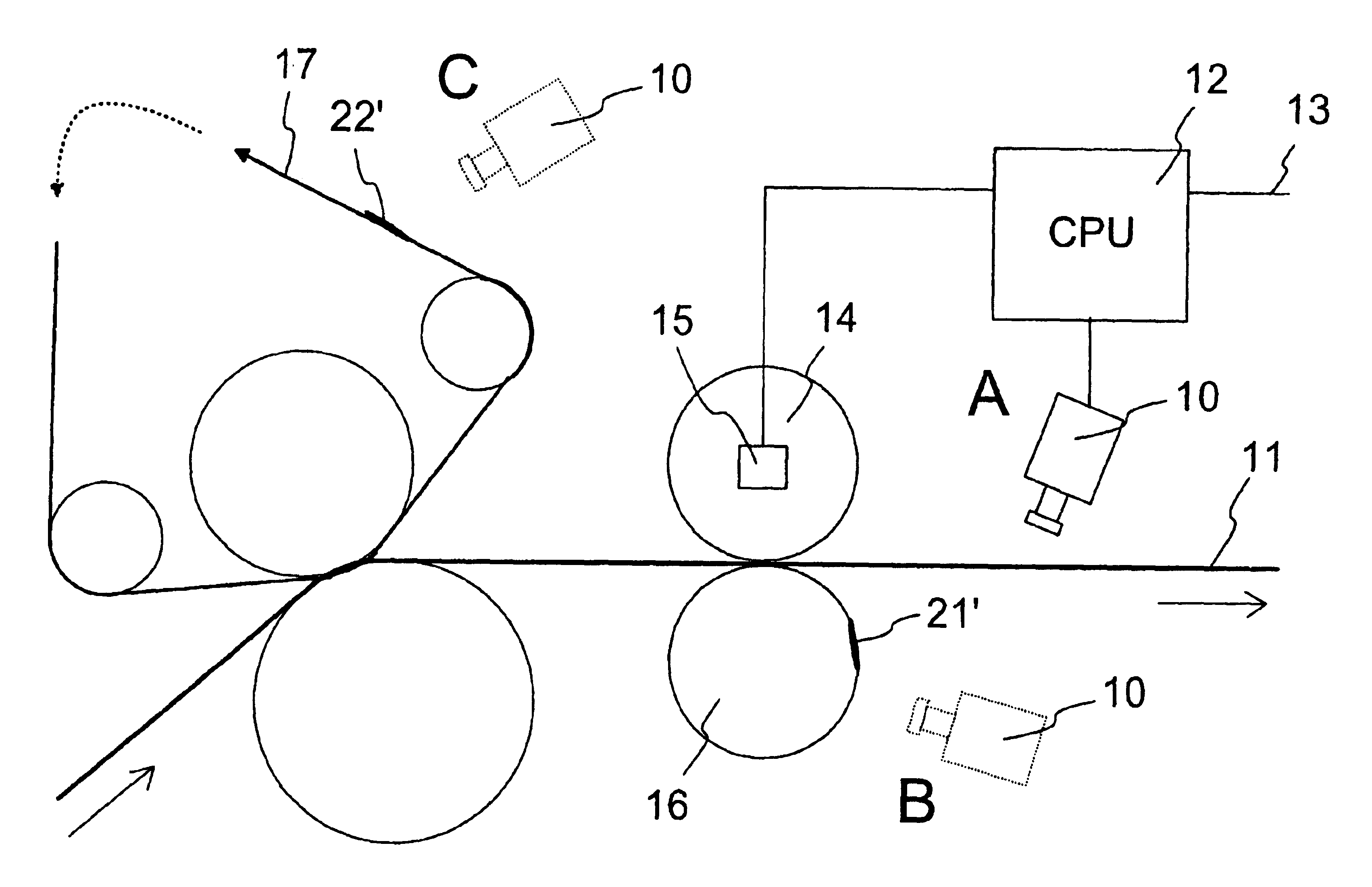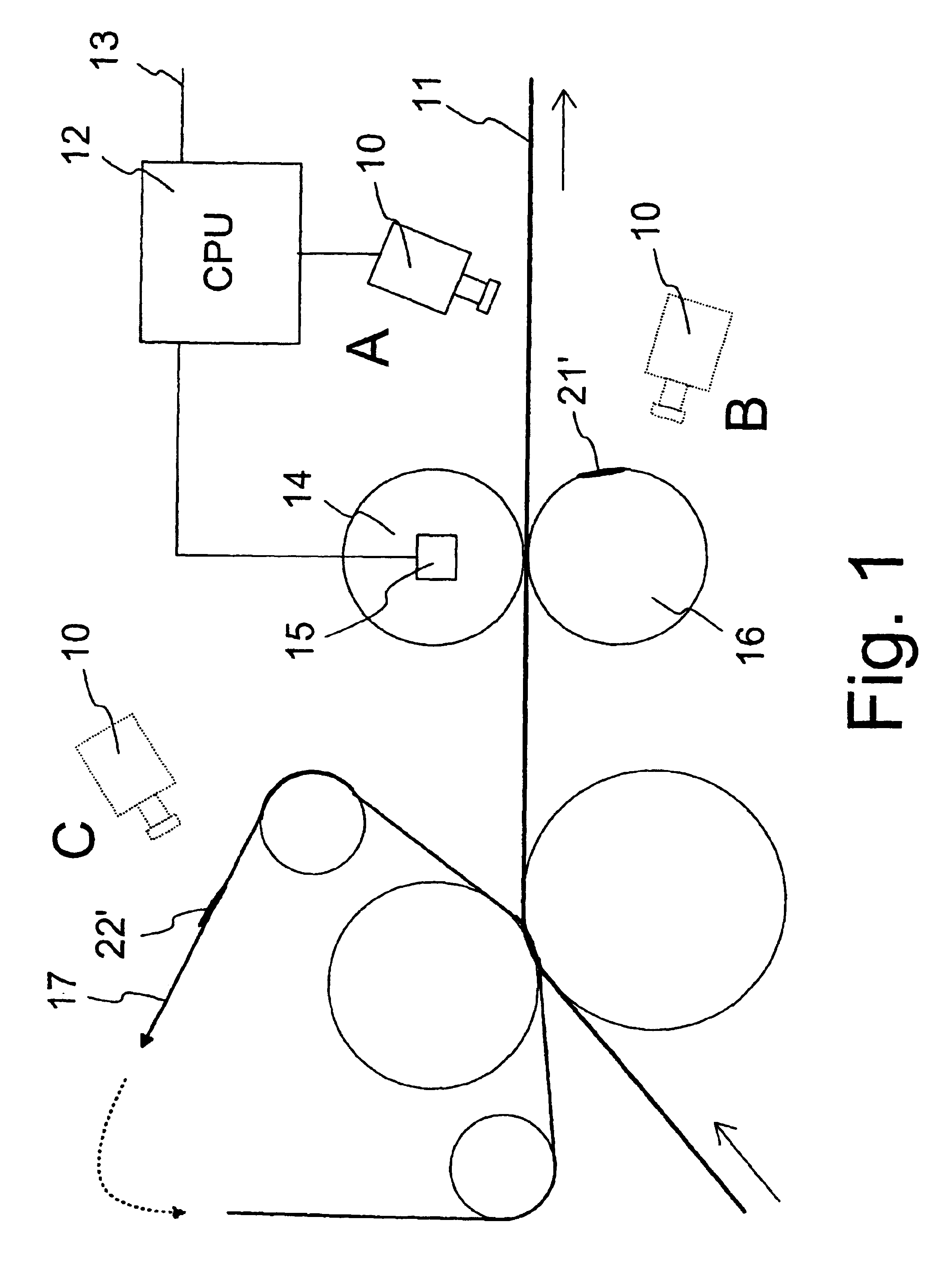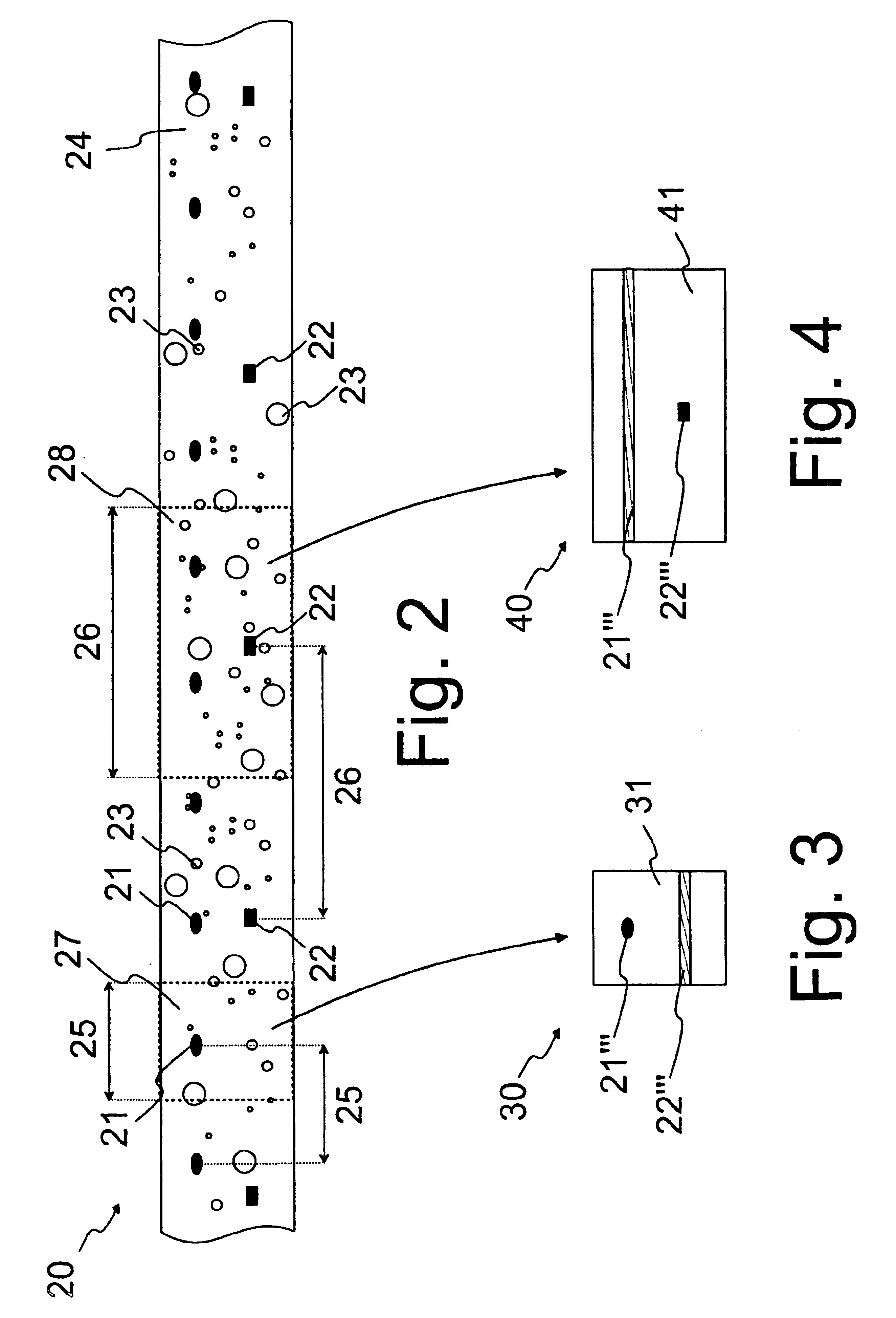Method for controlling quality and condition on the basis of thermal imaging
a technology of thermal imaging and quality control, applied in the direction of optical radiation measurement, instruments, material flaw investigation, etc., can solve the problems of easy disassembly and use of thermal image information, and easy disassembly of transient phenomena which may only occur recurrently, so as to achieve efficient elimination of random noise and low intensity
- Summary
- Abstract
- Description
- Claims
- Application Information
AI Technical Summary
Benefits of technology
Problems solved by technology
Method used
Image
Examples
Embodiment Construction
FIG. 1 shows, in principle, some possible embodiments of the invention which correspond to different positions A, B and C of a thermal camera indicated in FIG. 1.
A thermal camera 10 located in the position A is arranged to image a moving web 11 as the object of measurement, to form a continuous thermal chart of the web 11 in accordance with the invention. The web 11 can be a fibre web present in various forms in paper or board manufacture, and depending on the location of the measurement, the web can also be supported at the imaging point by a wire, a roll or another means on the side opposite to the imaging direction.
The thermal camera 10 can be a conventional infrared camera which is based on the use of a single detector element and in which a rotating mirror or a corresponding arrangement is used to direct infrared radiation from the object to the infrared-sensitive detector element by the scanning principle. In other words, the measuring range detected by the detector element is...
PUM
| Property | Measurement | Unit |
|---|---|---|
| infrared wavelength range | aaaaa | aaaaa |
| speed | aaaaa | aaaaa |
| operating wavelength range | aaaaa | aaaaa |
Abstract
Description
Claims
Application Information
 Login to View More
Login to View More - R&D
- Intellectual Property
- Life Sciences
- Materials
- Tech Scout
- Unparalleled Data Quality
- Higher Quality Content
- 60% Fewer Hallucinations
Browse by: Latest US Patents, China's latest patents, Technical Efficacy Thesaurus, Application Domain, Technology Topic, Popular Technical Reports.
© 2025 PatSnap. All rights reserved.Legal|Privacy policy|Modern Slavery Act Transparency Statement|Sitemap|About US| Contact US: help@patsnap.com



